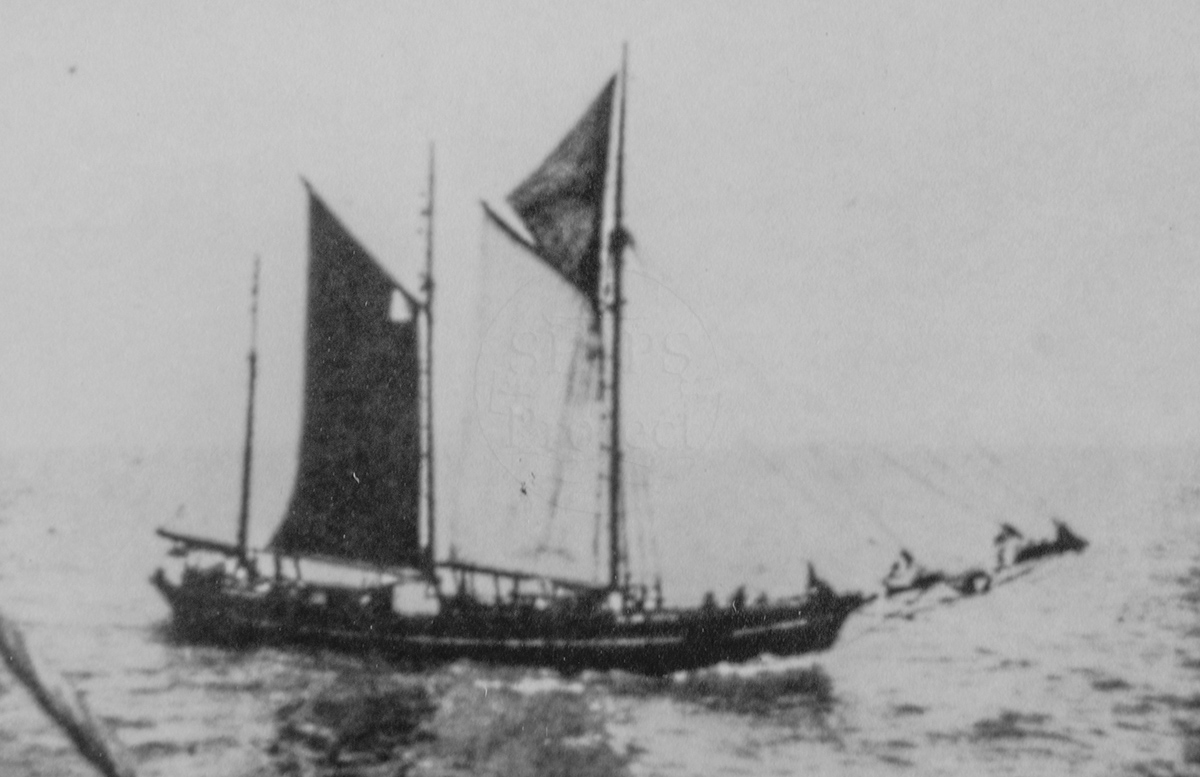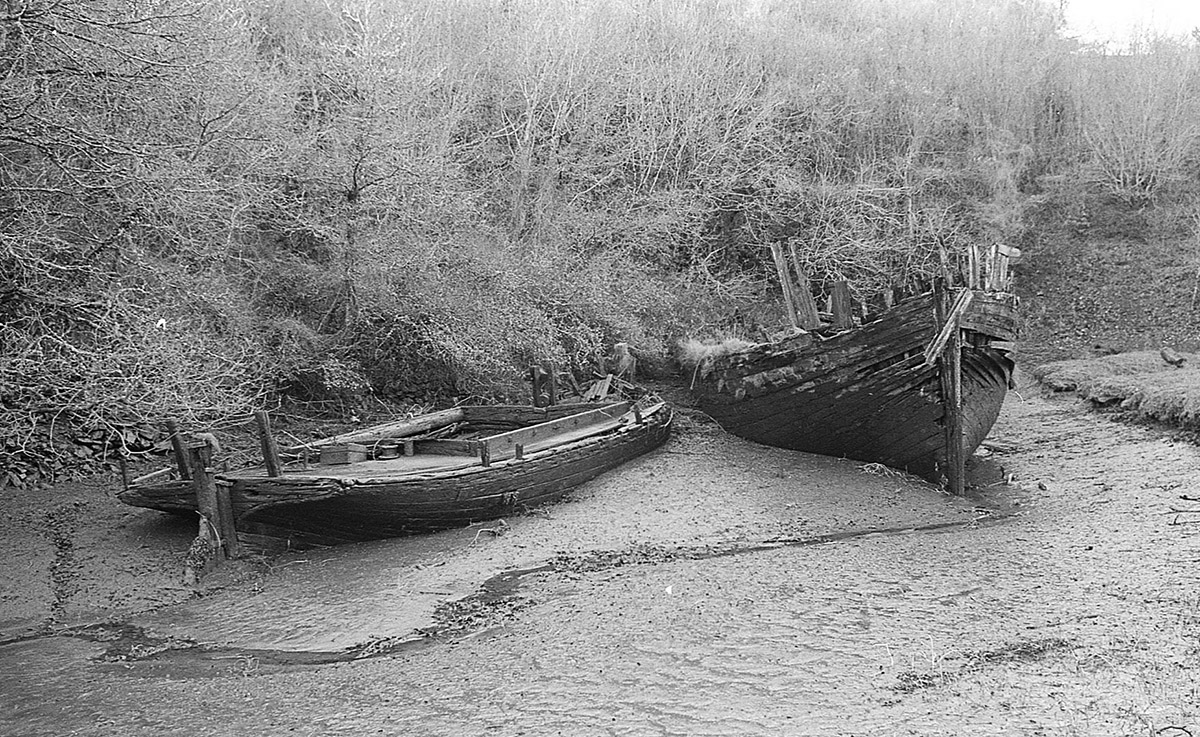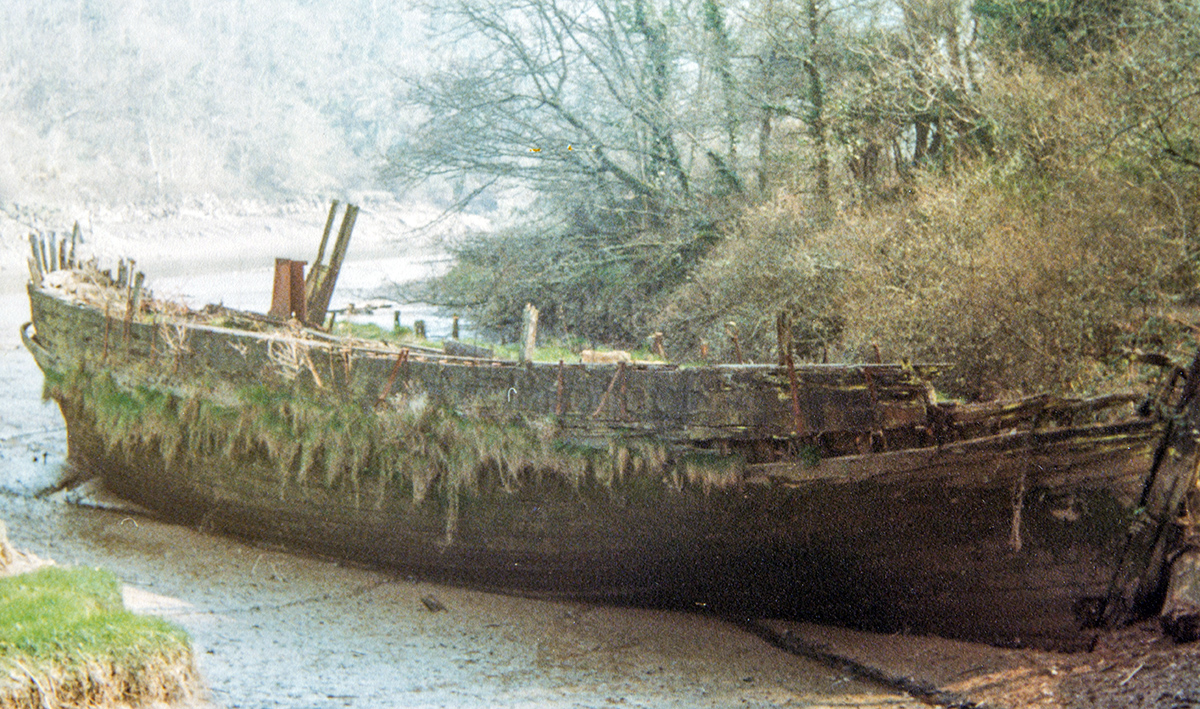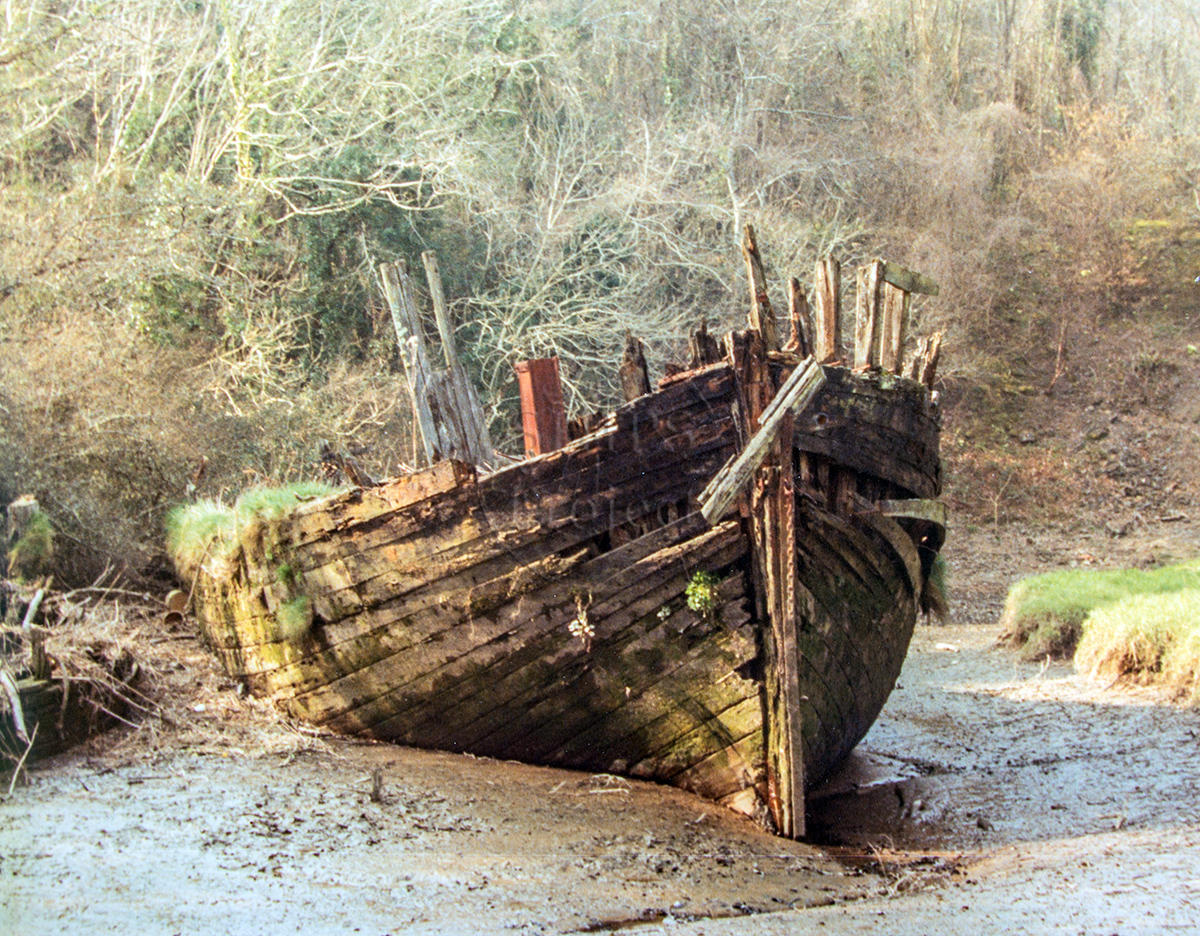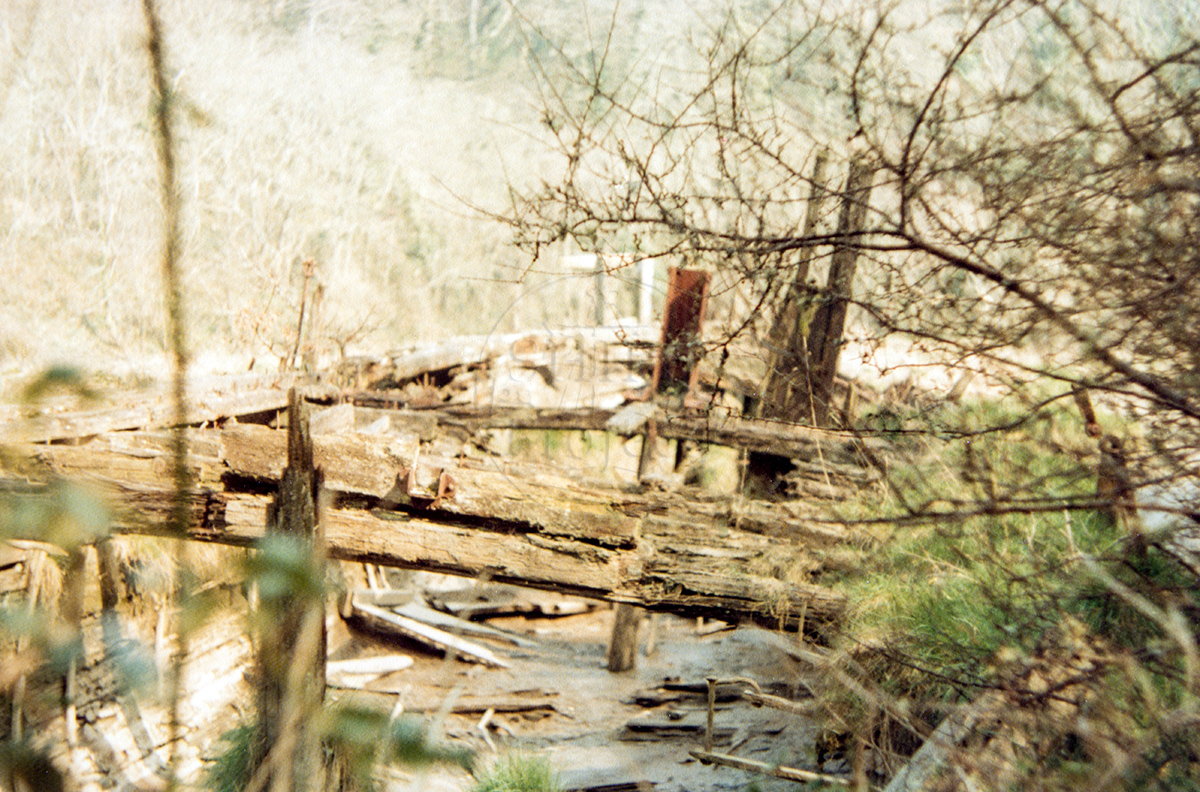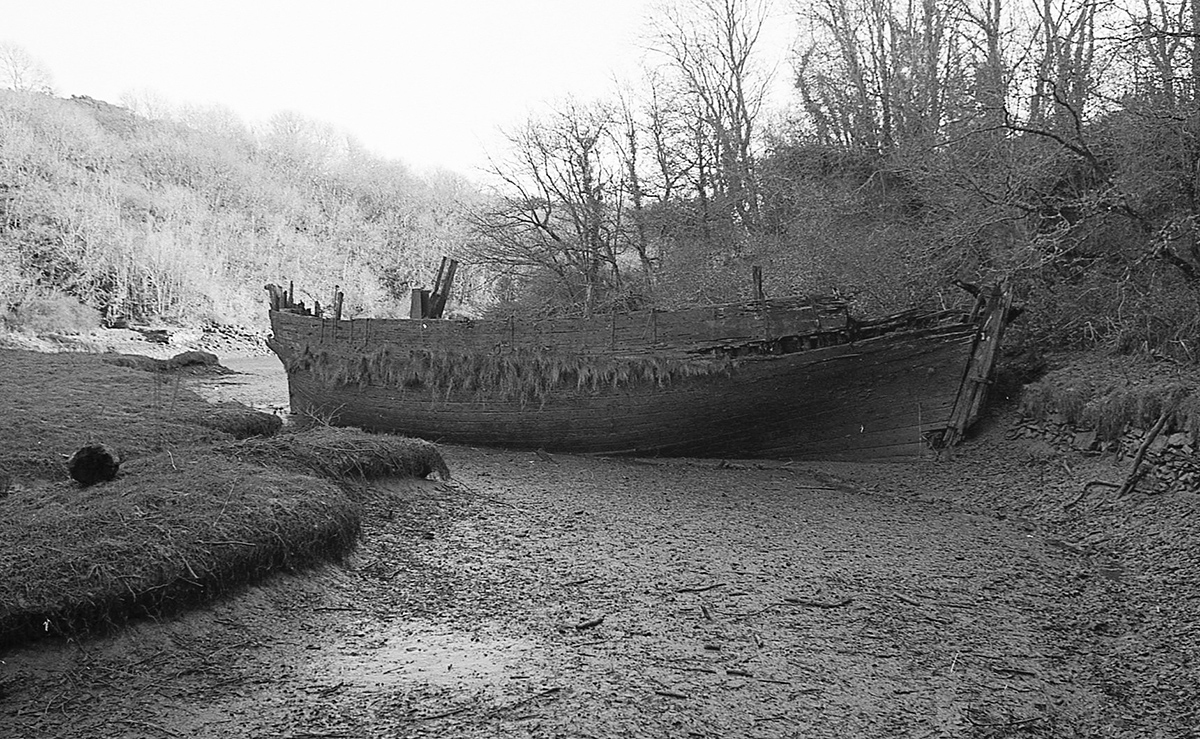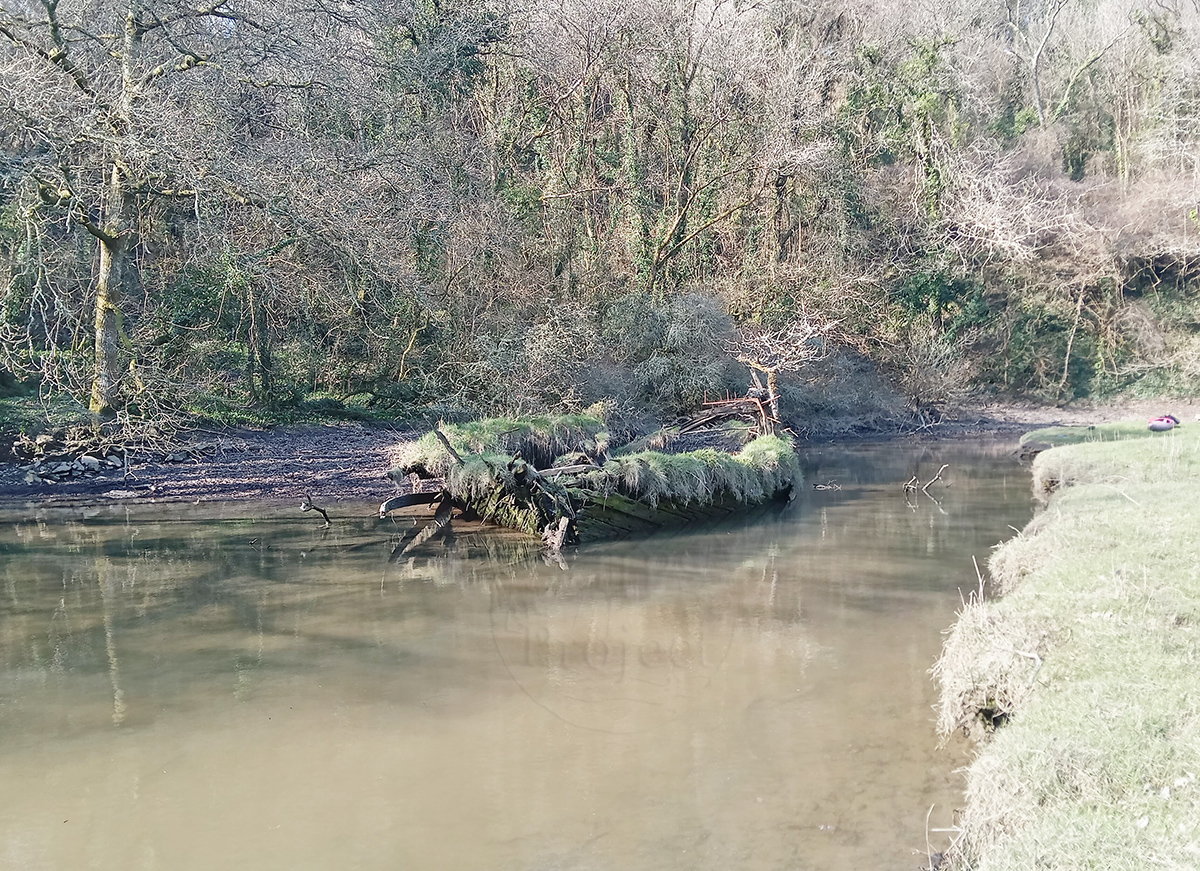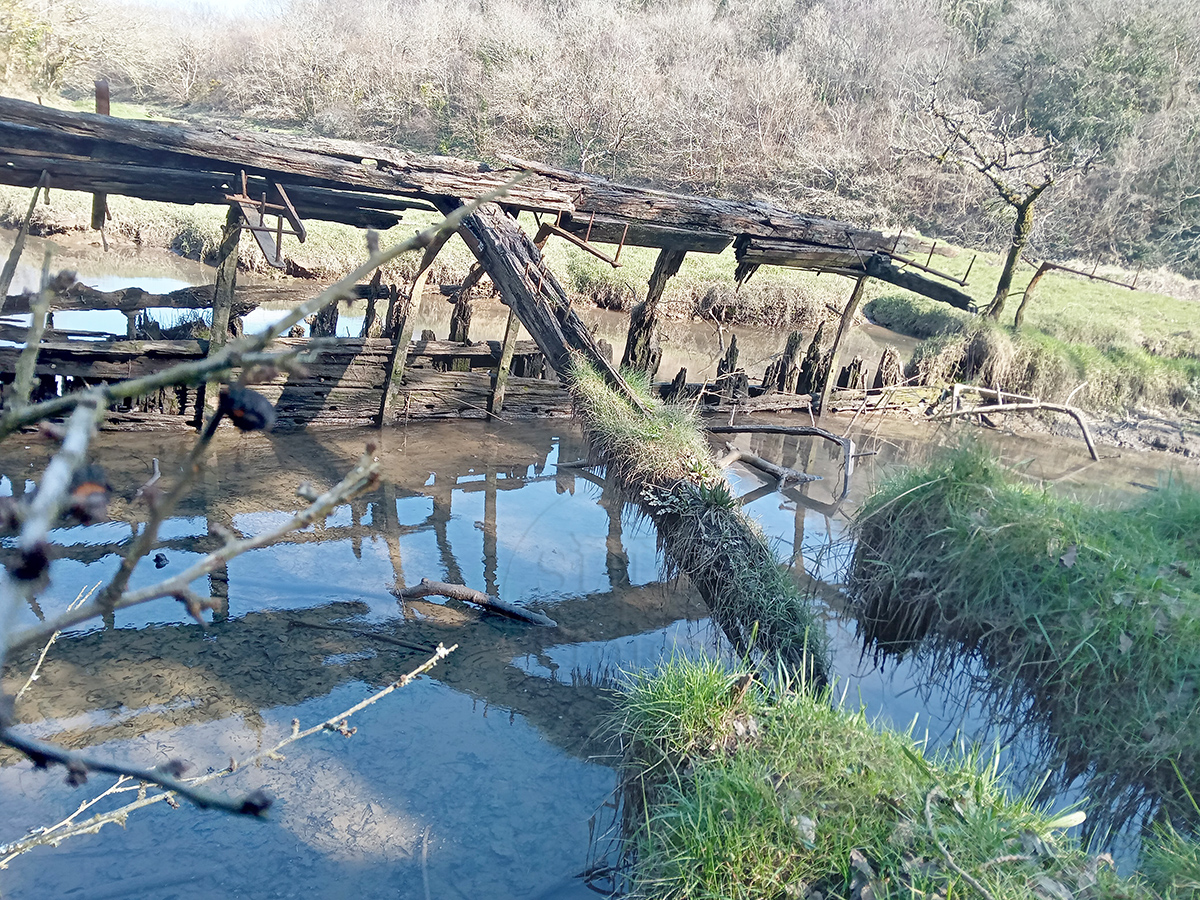Not Set
The remains of the schooner Millom Castle can still be found on the banks of the Lynher River by the quay at Poldrissick Quarry.
Type
Schooner
History
This 78 ton topsail schooner was built in Ulverston, Cumbria in 1870 and registered in nearby Barrow, the first owners were John and William White also from Ulverston. The vessel was described as always being very handy, or easy to sail, both loaded and 'light' with no cargo. The arrangement of her square topsails was changed a number of times through her life but she eventually lost them when she was converted to a ketch.
The Millom Castle was sold to William Postlethwaite of Millom, Cumberland in 1877 to be included as part of his fleet of 23 shooners. In April 1885 the Millom Castle was dismasted in a severe south-easterly gale seven miles off Douglas Head while carrying a cargo of iron ore to Saltney near Chester. The steamship Walney of Whitehaven stood by then towed the stricken schooner into Ramsey harbour on the Isle of Man.
In January 1899 the schooner was one of 23 vessels that had run into the River Dee for shelter, but a furious south-westerly gale caused the Millom Castle to drag her anchors and she went ashore on a sandbank leaving her high and dry at low tide. The schooner was undamaged and was refloated after having her cargo removed and she later sailed into the harbour at Mostyn.
The schooner survived another storm in 1905 when caught in a southerly gale. On a voyage from Saundersfoot in Pembrokeshire to Ipswich in Suffolk with coal, the Millom Castle was anchored in Caldy roadstead in the River Dee when a southerly gale came through. Captain Roberts fired off distress flares which alerted the Tenby lifeboat and the William and Mary Dever managed to get to sea despite the heavy surf breaking on the beach. After four attempts, the lifeboat got alongside the Millom Castle and took off the crew of three plus a dog and landed them at Tenby. The coxswain of the lifeboat said that this was the worst experience he could remember as the rough seas caused the boat to be underwater most of the time they were out.
The vessel was sold to William Kingdon Slade of Appledore in North Devon in 1912 and an auxiliary engine of 40 h.p. was fitted in 1919. The story of the Millom Castle is documented in Slade's book Out of Appledore where he describes the hard life of a merchant ship, and at one point he describes the ship having a crew of three and in 1913 none were over 21 years old. In 1921 the Millom Castle was converted from a topsail schooner to a ketch, a job done by the Slade family themselves; father, sons and nephews, so no money was spent on shipyards or hiring men for the work.
'This was the last time I ever saw sheerlegs used for lifting out the lower masts. We stripped her down to the deck in one day. The mainmast used as a schooner was the bigger of the two masts and this was shifted forward as the mainmast of the newly-rigged ketch and the foremast was poled off for a mizzen mast. We had the foreyard left from her topsail schooner days and this made a topmast. The whole job cost about 10 pounds, the cost of altering sails was additional to this figure.' Capt. Slade.
Years later she was converted again to a three-masted schooner. Her foremast was taller than her mainmast (Picture 1) so earned the vessel the unflattering nickname of 'the set of jugs' because of the shape of her three sails.
In 1925, the now ketch Millom Castle was dismasted off Lundy while running for shelter but reached port under motor power. The captain, George Slade, had left Appledore in company with the three-masted schooner Aldwyn under the command of his brother William. The weather soon worsened and the ships were steered for the shelter of Lundy Island, the Aldwyn reached the island two miles ahead of the ketch. When the Millom Castle got abreast of Rat Island the mainmast carried away, fortunately it fell forwards without injuring anyone. Unable to now reach Lundy the ketch made what headway she could, the Aldwyn came out to assist but the two ships lost sight of one another. The Aldwyn made for Appledore and reported the ketch missing, the lifeboat was put on standby, but when the weather cleared the Millom Castle appeared over the bar with the broken mainmast lying on her deck.
In 1929 ownership had changed to George Q. Slade. In January 1931 Capt. Weymouth, newly-appointed master of the Milford Haven steam trawler Madeline Jeanne rescued the disabled Millom Castle. The schooner was found by trawler when she was drifting at the mercy of a Force 9 south-easterly wind and rough seas in the Irish Channel. The Millom Castle was bound from Garston to Gweek, Falmouth, with a cargo of coal, when she encountered a fierce gale, the mizzen sail was blown away and she was drifting low in the water with just one mainsail up and one jib sail. Her condition had became almost serious and the schooner was in danger of being dashed on the rocks when the trawler sighted her and came to the rescue. After skilful manoeuvring under conditions of extreme risk and danger, the trawler succeeded in getting a line aboard the distressed vessel and took her in tow. For six hours the trawler battled with the gale but eventually managed to tow the schooner into Fishguard Harbour, where she was left safely at anchor with bare masts, well down by the head indicating that the schooner had a substantial leak.
The Millom Castle underwent a survey after her battering in the storm and the result was that she was registered fit for harbour work only. On 9th November 1931, Cole and Gwyther were instructed by the Court to sell the Millom Castle by auction at Lower Fishguard harbour. The ship was sold to Reginald L. Hancock of Milford Haven; the schooner was put up for sale in February 1932 along with the ketch Isabella by Peter Hancock and Sons, shipbuilders, describing her as 'reconditioned ready for sea'. It is not known how the Millom Castle got to Plymouth as Reginald Hancock was her last recorded owner, but it was reported that in 1932 she was owned by the Notter Quarry Company in Landrake, Cornwall.
On 27th October 1932 the Millom Castle was again in trouble when the Plymouth lifeboat rescued the crew two miles north of the Eddystone. The Plymouth lifeboat captain was alerted by the Hope Cove lookout that they had seen flares so the lifeboat was launched into a WNW gale and heavy rain. After battling for 90 minutes through violent seas the crew found the ketch Millom Castle under the command of Captain Thomas from Swansea to Devonport with a cargo of loam and a crew of three. The vessel was waterlogged and likely to founder, her engine had failed, mizzen mast broken and sails carried away.
'The trouble started when a sudden squall caused the ketch to heel right over, and the mizzen mast was carried away. We tried to get along with the auxiliary engine and another sail but our sails were quickly torn to ribbons. We were shipping awful seas and we sprang a leak as well. Then our fuel ran out, the engine stopped and we were at the mercy of the gale and seas'. Capt. Thomas
The top hamper had fallen over to the lee side of the ketch making an approach impossible so an approach was made from the windward side in an attempt to get the crew to safely. A wave smashed the two vessels together ripping off the lifeboat's port side bow fender. At great risk to lifeboat crew, the coxswain Roach held the lifeboat steady against the rolling ketch allowing Captain Thomas from Port Isaac, engineer Ernest Toms of Looe and seaman George Richards of Port Isaac to jump on board, Toms was injured and later taken to hospital. The Millom Castle had five feet of water in her when they left and she was abandoned to the mercy of the sea, but on 29th October the badly damaged ketch was towed into Plymouth by the steam trawler Atlantic.
But in January 1933 the Millom Castle was reported to have been in Plymouth along with the Englishman, the three-masted barquentine Francis and Jane owned by Westcotts, the Janie lying at Oreston, the ketch Maggie Annie ![]() and the C.F.H. from Barnstaple, plus the Hobah and Cecilia from Bideford. It is possible that the account refers to a sighting before the dismasting and near foundering in October 1932. It is believed that shortly after this the Millom Castle was abandoned alongside the quarry quay at Poldrissick on the River Lynher, perhaps after spending time as an unpowered barge used to shift quarry stone.
and the C.F.H. from Barnstaple, plus the Hobah and Cecilia from Bideford. It is possible that the account refers to a sighting before the dismasting and near foundering in October 1932. It is believed that shortly after this the Millom Castle was abandoned alongside the quarry quay at Poldrissick on the River Lynher, perhaps after spending time as an unpowered barge used to shift quarry stone.
Ironwork for hanging knees, deck fittongs and mast fittings were salvaged from the hulk of the schooner Millom Castle by a naval party from HMS Raleigh, Devonport, and used for the restoration of the Tamar sailing barge Shamrock ![]() .
.
The schooner Millom Castle is mentioned in Langley and Small's book Lost Ships of the West Country and was photographed by them in the 1980s. Thanks to John Cotton and Stephen Johnson for photographs of this vessel.
Read about this hulk on John Cotton's Historic Shipping website ![]() .
.
Please get in touch if you have any information about this vessel by sending us a message below.
Description
The remains of the hull of the Millom Castle can still be seen at low water on spring tides by the quay at Poldrissick Quarry. All the fittings have been stripped from the vessel and many were used in the restoration of the Tamar barge Shamrock.
The remains of the Millom Castle are slowly being reclaimed by nature (Figs 7, 8). When the ship was photographed by Helen Manley in 2021 the shape of the hull could be seen in the frames and remaining outer planking, but the tops of the frames now support a lawn of grasses and a small tree so it looks like an island. Many of the iron knees and long fasteners remain while the timbers they supported have rotted away.
Location and Access
Poldrissick Quarry, Lynher River, Cornwall.
Nearby hulks include ketch Maggie Annie ![]() , Tamar barge Lynher
, Tamar barge Lynher ![]() , Tamar barge Triumph
, Tamar barge Triumph ![]() and Thames barge Beatrice Maud
and Thames barge Beatrice Maud ![]()
Last updated 01 May 2021
Information
Date Built:
1870
Type:
Schooner, ketch
Builder:
, Ulverston, Cumbria
Official Number:
65043
Length
24.8m / 81.2ft
Beam
6.3m / 20.6ft
Draft
2.9m / 9.5ft
Construction
Timber, carvel
Propulsion
Sail, schooner rig
Tonnage
93 GRT, 60 net tons
Portmarks
None
Outcome
Abandoned after 1932
Reference
Unknown
Ship Construction
The Barrow flats built in Cumberland were some of the most massively built of the small merchant ships. The Millom Castle was well built with lower frames, floor timbers and futtocks made of 9in square oak, her upper frames were 6.5in square. The framing on the first and last 25ft of her hull were almost solid as the frames were so close together. There was 2.5in pine planking topsides and elm below the bilges and the 10in deck beams were made of hackmatack, a type of American larch. The beam shelf was made of 9in timber and she had three sternposts. The deck planks and ceiling planking inside her hull were 2.5in thick.
Not Set
Leave a message
Your email address will not be published.
Click the images for a larger version
Image use policy
Our images can be used under a CC attribution non-commercial licence (unless stated otherwise).


